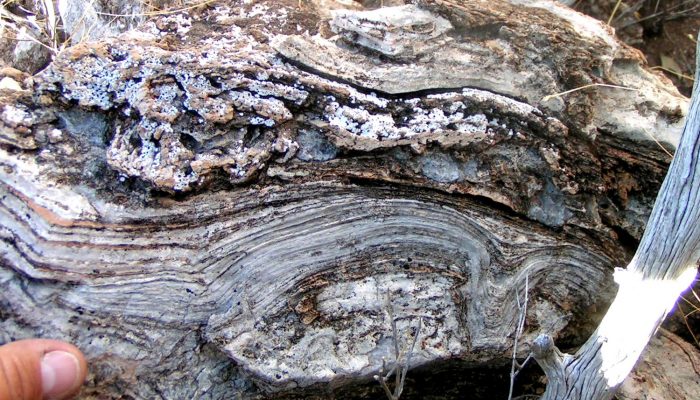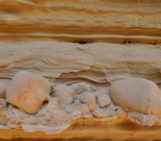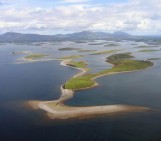
Microbialites – structures which result from the interaction between microbes and sediments – have existed in the rock record since 3700 Ma ago until the present day. The presence of microbes in environments where mineral precipitation is prevalent, usually derives in the development of such chemical sedimentary structures. This can take place in marine, non-marine, and subterranean environments. The most common type of microbialites may be referred to as stromatolites.
The stromatolites shown here formed ~72 Ma ago in an intra-arc basin – a basin, located between two chains of volcanoes formed above subducting plates, where sediments deposit – within the Tarahumara Formation, which was emplaced during the Laramide orogeny (some 70 to 80 million years ago) in Northwestern Mexico (Sonora).
The locality has been named the Huepac Chert because of the presence of thin and thick chert – a very fine grained rock made of silicon dioxide – horizons. The chert is black and it contains a great variety of fossils, including pollen grains, fungal spores, green algae, cyanobacteria, diatoms, arthropod remains, fruits, palm roots, aquatic plants (e.g. Haloragaceae), and numerous achritarchs.
Preliminary studies of the Fe2O3/TiO2 and MnO/TiO2 ratios in the chert suggest that hydrothermal activity was frequent and that it promoted the deposition of the majority of the chert where important organisms are beautifully preserved. Iron-rich laminae, instraclasts, and evaporation processes may be inferred for the topmost sediments covering the stromatolites, suggesting that the water level fluctuated while these structures were forming.
There is still much work to do regarding the paleoenvironments where those Cretaceous stromatolites developed. These Upper Cretaceous successions are rare in Sonora, and biostratigraphic correlations can be made only with one locality to the South (Cerro El Obispo), but no other localities with similar lithology and fossil content have been reported.
By Hugo Beraldi, researcher at the Institute of Geology of the National Autonomous University of Mexico
Imaggeo is the EGU’s online open access geosciences image repository. All geoscientists (and others) can submit their photographs and videos to this repository and, since it is open access, these images can be used for free by scientists for their presentations or publications, by educators and the general public, and some images can even be used freely for commercial purposes. Photographers also retain full rights of use, as Imaggeo images are licensed and distributed by the EGU under a Creative Commons licence. Submit your photos at http://imaggeo.egu.eu/upload/.




